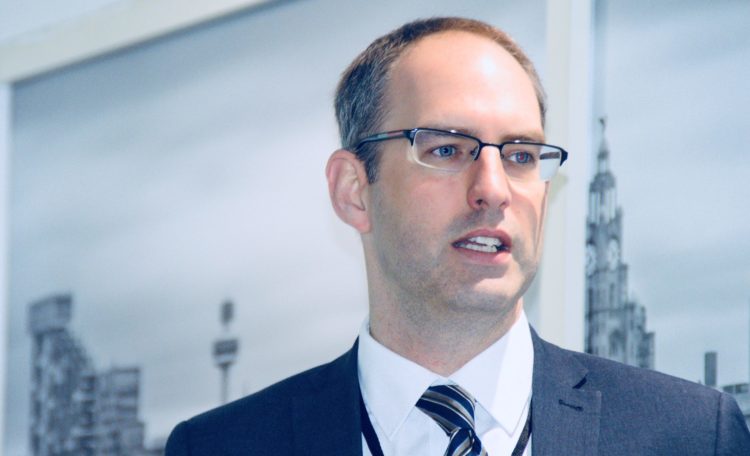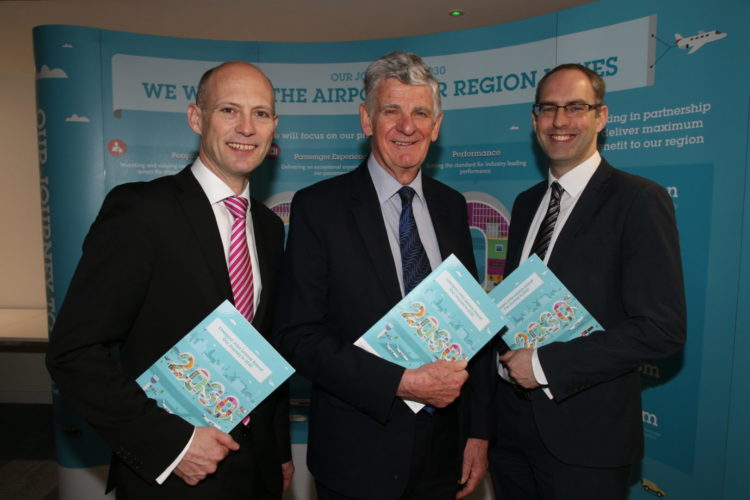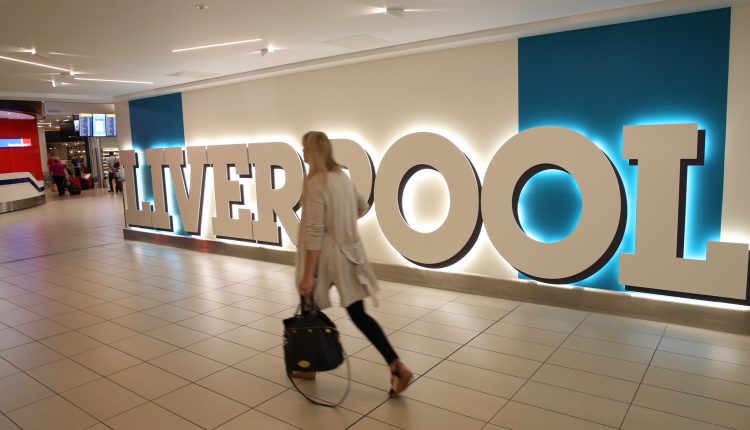LJLA’s strategic plan, which it presented to business leaders on Friday morning, aims to grow passenger numbers to 8m by 2030, pushing up GVA contribution to £625m and support 12,000 jobs. Tony McDonough reports

Liverpool John Lennon Airport (LJLA) is to invest £100m between now and 2030, almost trebling it economic contribution to the city region and doubling the number of jobs it supports.
Currently, the airport handles just under 5m passengers a year, contributes around £250m to the city region GVA and supports 6,000 jobs across Merseyside.
Its new strategic plan, which it presented to business leaders on Friday morning, aims to grow passenger numbers to 8m by 2030, pushing up GVA contribution to £625m and support 12,000 jobs.
Projects in the pipeline include a proposed expansion of the terminal building, additional car parking, passenger facilities including hotels, retail, food and drink services and a potential extension of the runway to accommodate long-haul routes.
New CEO
LJLA also unveiled its new chief executive – John Irving – who takes the helm following the resignation of Andrew Cornish last year.
Airport chairman Robert Hough also spoke at the event and both men told the audience that one of the key objectives was to establish a hub link with a major airport. In recent years there were two attempts at a hub link via Amsterdam’s Schiphol Airport with KLM and Flybe, but both were eventually stopped.
Irish carrier Are Lingus also offered connecting flights to North American destinations, such as New York and San Francisco via Dublin, but this too didn’t survive.
If London Heathrow gets the go-ahead for a third runway it has promised a £10m development fund to establish regional air links. However, with that project still in the balance both Mr Hough and Mr Irvine stressed LJLA was not putting all its eggs into one basket.
“We need to look elsewhere for a hub link with a big flag carrier,” said Mr Hough. “And we need to push on with that independently of what might happen with Heathrow.”
And Mr Irvine, a Geordie who took up his post two weeks ago, added: “Our focus is certainly not just on Heathrow. The connectivity we are looking for can come from anywhere.”
Senior roles
A qualified management accountant, Mr Irvine joins LJLA from Newcastle Airport where he was chief commercial officer. He also also held senior roles at Newcastle United FC and Procter and Gamble.
He said: “One of the things I have discovered since I have arrived is how proud everyone here is of this airport everyone is aware of the role it plays in regional development. I have only been here for two weeks but I have visited a few times prior to starting and what I have noticed is the friendliness.
“Liverpool is operating in a very competitive market and connectivity is the key to our growth and success. We want to help businesses here connect with different parts of Europe and the world.
“We will attract people who have never used the airport before and people who may have used it in the past but haven’t been here for a few years. When they come through they will see that this is an absolutely brilliant place – and they will keep coming back.”

Customer experience
In 2017 LJLA completed the latest phase of development work aimed at further improving the customer experience for departing passengers with the introduction of a number of new retail brands.
These included Dixons and Accessorize, new shops, bars and restaurants and more than £4.5m invested in the refurbishment and upgrade of approximately 20,000 sq ft of the upper floor of the departure lounge.
The airport’s strategy director Mark Povall also spoke at the event and outlined the strategic plan to those assembled. He talked about how 38% of LJLA passengers were flying into the airport – higher than the average for regional airports.
He said much of the future investment would continue to focus on improving the customer experience. He said the airport was keen to see an increase in the number of business passengers and a growth in freight volumes, which had fallen significantly in recent years.

